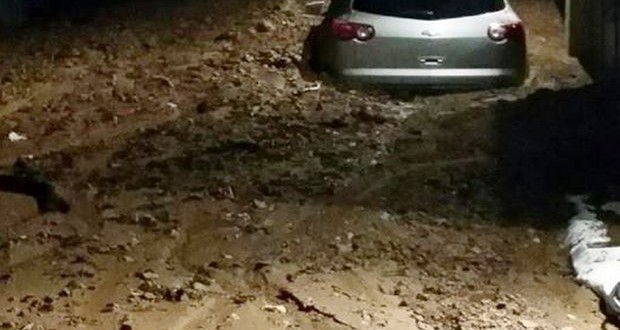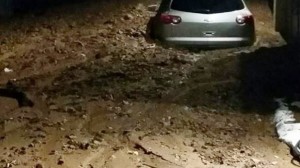LOS ANGELES, CA- As California endures a historic drought and recovers from recent wildfires, residents need to prepare for the possibility of mudslides and flooding triggered by the current major rainstorm affecting the southland, the biggest of the year. Dangerous areas include zones previously affected by the #ColbyFire in the San Gabriel Mountains, near Los Angeles, where up to 6 inches of rain are expected, and sections of the Pacific Coast Highway (PCH), in Malibu. Various downed power lines and flooding problems have been reported and mandatory evacuations issued. As a reminder, flooding is the most common and costly natural disaster in the United States, causing about $50 billion in economic losses each year, according to the Insurance Information Institute. State Farm encourages residents to take the following steps to protect:
A) YOUR LIVES:
- Listen to first responders and to the news – If a mandatory evacuation has been ordered in your area, gather your most important documents and key belongings and leave your house promptly.
- Drive in “defense mode” – In heavy rain and during flash floods seek high ground, turn on your lights, slow down, maintain more distance with other cars, and avoid driving on roads covered by water.
- Keep Tank Full and Change Wipers – Wipers should be replaced if the windshield view is smeared.
- Have a Road Survival Kit in the car– It should include a: tool set, spare tire, car jack, first aid kit, blanket, rain jacket, plastic tarp, jumper cables, flash light, gloves, spare cloths, water, non-perishable food, and road flares.
B) YOUR PROPERTY:
- Inspect Your Home – As the storm progresses, inspect your home and monitor rain gutters, roof, yard, out-buildings, and trees and shrubs for possible hazards.
- Make an Inventory – Create an inventory taking photos and short videos of your possessions in each room.
- Create an Emergency kit – Make sure you have plenty of emergency supplies like batteries, blankets, flashlights, water and non-perishable foods.
- Have an Evacuation plan – If you live close to a hillside area, have a disaster evacuation plan.
C) YOUR FINANCES:
- Flood damage and homes – damage due to floods is typically not covered by standard homeowners or renters insurance policies. Should you live in an area that is prone to floods or mudslides, consider purchasing flood insurance through the National Flood Insurance Program: Floodsmart.gov.
- Flood damage and cars – comprehensive coverage on a typical auto insurance policy will cover damage to a car caused by a flood.
- Talk to your agent – review your policies and discuss your insurance needs.
“While these weather conditions persist, if you can avoid driving unless necessary that would be best. And at home, monitor if the water is finding its way in and act,” said Jordi Ortega, spokesman for State Farm, who added: “Now is a good time to call your agent and review your home insurance policy.”
About State Farm
State Farm and its affiliates are the largest provider of car insurance in the U.S. and is a leading insurer in Canada. In addition to providing auto insurance quotes, their 18,000 agents and more than 65,000 employees serve almost 84 million policies and accounts – approximately 82 million auto, home, life, health and commercial policies in the United States and Canada, and nearly 2 million bank accounts. Commercial auto insurance, along with coverage for renters, business owners, boats and motorcycles, is available. State Farm Mutual Automobile Insurance Company is the parent of the State Farm family of companies. State Farm is ranked No. 41 on the 2014 Fortune 500 list of largest companies. For more information, please visithttp://www.statefarm.com or in Canada http://www.statefarm.ca.
 Westside Story Newspaper – Online The News of The Empire – Sharing the Quest for Excellence
Westside Story Newspaper – Online The News of The Empire – Sharing the Quest for Excellence





